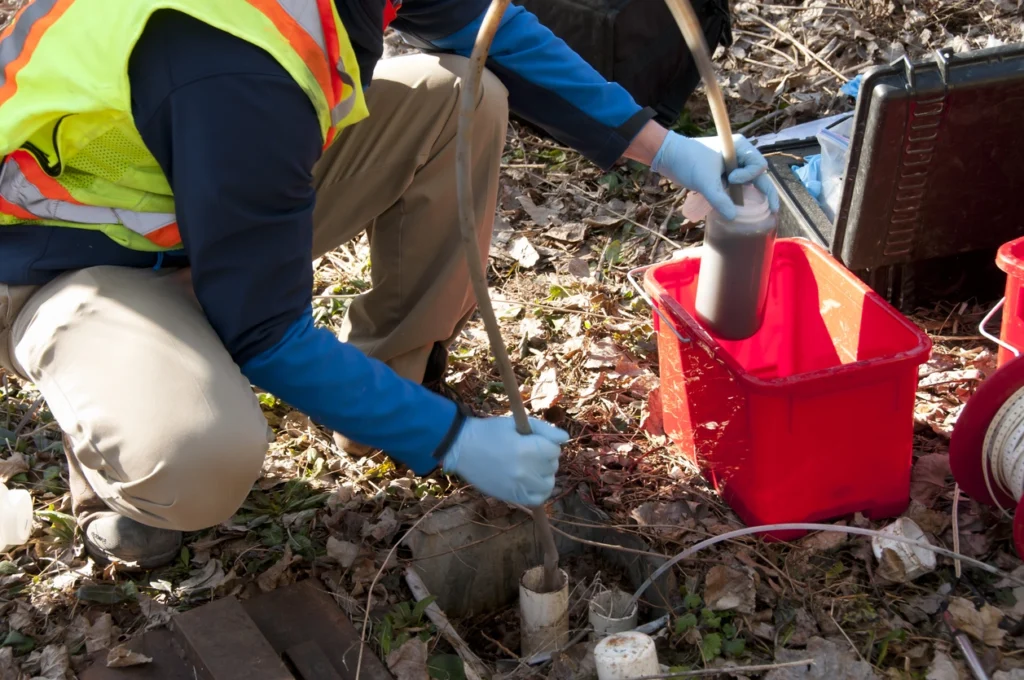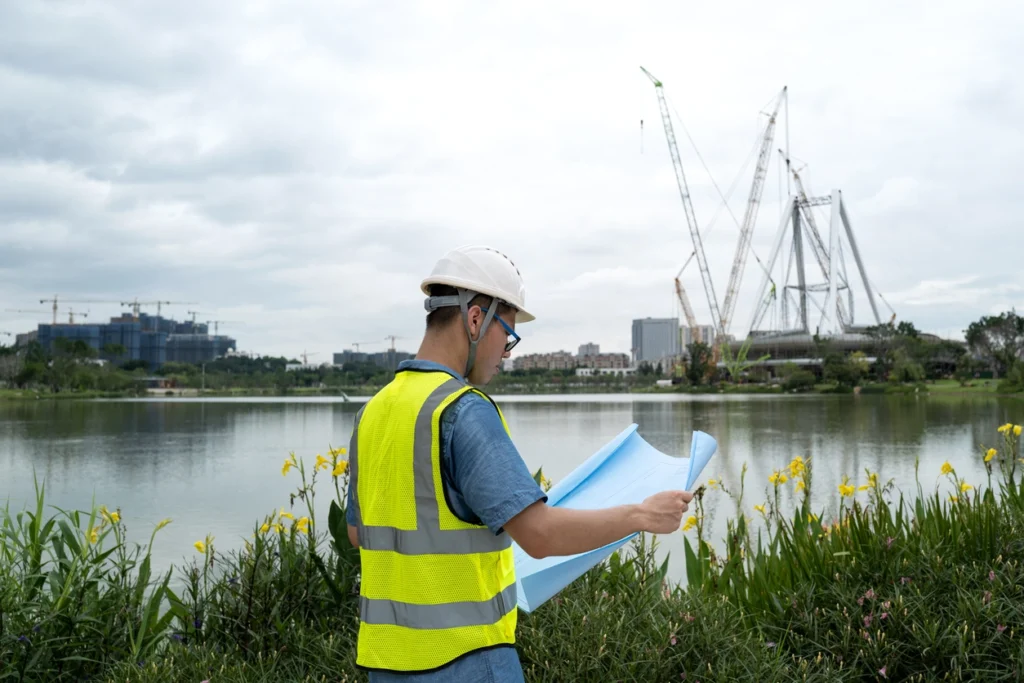Navigating the world of environmental regulations can feel like deciphering a complex code. Central to this process are environmental regulatory filings. These are official documents submitted to government agencies designed to demonstrate compliance with laws protecting air, water, and land resources. Let’s break down some of the most common types:
- Permits: These are essentially licenses to operate a facility or project, with strict conditions related to potential environmental impacts. For example, a power plant might need an air emissions permit, or a construction project near wetlands would require a water discharge permit.
- Impact Assessments: Before projects can get underway, agencies might require an Environmental Impact Statement (EIS) or a less-detailed Environmental Assessment (EA). These assess potential environmental damage, alternatives, and ways to mitigate harm.
- Compliance Reports: These demonstrate that a facility is meeting its permit conditions. They might include regular monitoring data (air emissions, wastewater), waste disposal manifests, or incident reports.
- Other Filings: This broad category can include things like emergency response plans, closure plans for ending operations, or specific notices required under certain regulations.

Why Regulatory Filings Matter: The Stakes are High
Environmental regulatory filings aren’t just bureaucratic red tape. They have serious implications for both businesses and the environment:
- The Legal Side: Incomplete, inaccurate, or late filings can result in hefty fines, project shutdowns, or even legal action. In worst-case scenarios, individuals within an organization could face liability.
- Project Delays: Failure to secure the right permits on time can grind projects to a halt. This translates to lost revenue, increased costs, and potential damage to a company’s reputation.
- Operational Costs: Meeting permit conditions often means investing in pollution control technology, specialized waste disposal, or ongoing monitoring – all of which add to a business’s bottom line.
- Environmental Protection At their core, environmental filings are a tool governments use to manage risk and safeguard our natural resources. Accurate reporting and timely permits contribute to a cleaner, healthier environment.
The Landscape of Environmental Regulations
Federal vs. State: Who Makes the Rules for Environmental Regulatory Filings?
The United States has a layered system of environmental laws. Picture it like this:
- The Federal Baseline: The U.S. Environmental Protection Agency (EPA) sets the minimum standards at a national level. Think of these as the broad rules of the game everyone has to follow.
- State-Level Customization: States can (and often do) have stricter environmental protection rules than the EPA. They might have additional regulations in areas the EPA doesn’t cover. Each state has its own environmental agency responsible for enforcement.
Key Regulatory Areas
Here’s a breakdown of the areas where businesses are most likely to encounter environmental regulations:
- Air Quality: Regulations focus on limiting emissions of pollutants from factories, vehicles, and other sources that contribute to smog and health issues.
- Water Quality: Rules ensure clean drinking water and protect rivers, lakes, and wetlands. These cover discharges from factories, wastewater treatment, and pollution runoff from urban or agricultural areas.
- Waste Management: Covers the proper handling, storage, transport, and disposal of solid waste like garbage, as well as hazardous waste that poses environmental or health risks.
- Hazardous Materials: Specific regulations govern chemicals and substances that are flammable, toxic, or pose other dangers. This includes their use, storage, transport, and disposal.
- Other Important Areas: Depending on the business, regulations might also apply to things like endangered species protection, site cleanup of contaminated land, or noise pollution.

Finding the Right Rules: Where to Start with Environmental Regulatory Filings
The sheer volume of regulations can be overwhelming! Here’s a starting point for businesses:
- Know Your Industry: Regulations are often industry-specific. A manufacturing plant will face very different requirements from a construction company.
- EPA Resources: The EPA website has a search tool to help businesses find relevant laws based on industry and activity.
- State Agency Websites: Search for your state’s environmental department. They often have industry guides or summaries of key regulations.
- Don’t Go It Alone: If it gets complex, consider consulting an environmental lawyer or a specialized environmental consultant.
Important Note: Regulations change constantly! Businesses need a system to stay up-to-date and ensure they’re always in compliance.
Common Types of Environmental Regulatory Filings
Environmental Impact Statements (EIS)
- When Required: Major projects with potentially significant environmental impacts, often federally funded or those involving federal lands.
- The Process (Simplified):
- Agencies identify the need for an EIS.
- “Scoping” determines the issues to be analyzed.
- A draft EIS is prepared, including alternatives and mitigation measures.
- Public comment period for feedback and revisions.
- Final EIS is issued, and a decision is made on whether to proceed.
Operating Permits
- Air Emissions: Detail allowable pollutant types and limits, monitoring methods, and record-keeping.
- Wastewater Discharge: Set limits on what can be discharged into waterways, treatment requirements, and monitoring schedules.
- Waste Disposal: For facilities handling hazardous or solid waste – specify storage, transport, disposal methods, and record-keeping.
Hazardous Materials Management
- Chemical Inventories: Detailed lists of hazardous substances on site, often including Safety Data Sheets (SDS).
- Storage Plans: Outline safe handling procedures, spill containment, and employee training requirements.
- Disposal Records: Track how hazardous waste is shipped off-site, ensuring use of licensed disposal facilities.
Compliance Reports
- Purpose: Demonstrate a facility is meeting permit conditions, regulations, and minimizing environmental harm.
- Contents (May Vary):
- Monitoring data (emissions, wastewater test results)
- Incident reports (spills, releases)
- Waste disposal manifests
- Inspection logs
- Frequency: Can be monthly, quarterly, or annually, depending on regulations and permit requirements.
Important Reminders
- Specifics vary: Filing requirements and deadlines differ by jurisdiction (federal vs. state) and industry.
- Complexity increases: Facilities with multiple operating permits and hazardous material handling can face a substantial paperwork burden.
- Accuracy is key: Errors or missing information can lead to non-compliance issues and penalties.

How to Prepare a Regulatory Filing
Environmental regulatory filings can feel like a bureaucratic maze. Here’s a roadmap to streamline the process:
Gathering the Right Data
- Start with Your Permits: Your existing operating permits are your guidebook. They’ll outline what data you need to collect, how to monitor it, and the specific reporting requirements.
- Types of Data (Examples):
- Emissions Monitoring: Air pollutant release data, continuous emissions monitoring system (CEMS) records.
- Wastewater Test Results: Analysis of pollutants, flow rates.
- Waste Disposal Manifests: Records of hazardous and non-hazardous waste shipments.
- Operational Logs: Equipment inspections, maintenance records.
- Site Assessments: Especially for new projects or those involving contaminated land.
Working with Consultants
- When to Seek Outside Help:
- Complex projects with significant environmental impacts (those needing an EIS).
- New facilities where you lack the in-house expertise.
- Highly technical data collection requiring specialized equipment or analysis.
- When facing tight deadlines.
- Benefits: Consultants bring regulatory knowledge, technical skills, established relationships with agencies, and can free up your internal resources.
Understanding Agency Forms and Processes
- Don’t Be Intimidated: Many agencies have online tutorials, helpdesks, or workshops for businesses on how to complete forms.
- Ask Questions Early: If something is unclear, contact the agency well before the deadline. It’s better to ask than submit incorrect information.
- The Rise of E-Filing: Increasingly, agencies are moving to online submission portals. Familiarize yourself with these systems to prevent last-minute glitches.
Submitting Your Filing and Beyond
Where to Submit: Finding the Right Place
- Federal Filings: The EPA often uses centralized online submission portals for specific types of filings, which can be found on their website.
- State Agencies: Each state has its own environmental agency website. Search for “[Your State] + Department of Environmental [Quality/Protection]” to find their website and filing resources.
- Industry Portals: Some industries or areas have specialized online filing systems. Your permit documents or trade associations might provide this information.
Typical Timelines: Patience is Key
- It Varies: Processing times can range from weeks to months, depending on the filing type, agency workload, and the project’s complexity.
- Best to Ask: Contact the agency or review their website for estimated review timeframes. Build extra time into your project plans to avoid delays.
- EIS Exception: Environmental Impact Statements have a more defined process and can take a year or more to complete.
Addressing Agency Feedback
- Expect Questions: Agencies often request clarification, additional data, or minor revisions to filings. Consider this a normal part of the process.
- Responsive, Not Defensive: Aim to address their concerns promptly and professionally. View it as collaboration to ensure accuracy and compliance.
- Get Help If Needed: For complex requests or significant changes, don’t hesitate to consult with an environmental attorney or a specialized consultant.
The Importance of Follow-Through
- Approval Isn’t the End: Once you have permits, it’s on you to adhere to them. Regular monitoring, reporting, and recordkeeping are critical to stay in compliance.
- Systems Matter: Consider using environmental management software or organized record-keeping systems to prevent future headaches down the line.
- Stay Informed: Subscribe to email listservs or agency newsletters to be alerted about changes in regulations that could affect your operations.

Staying Compliant After Filing
Think you’re done once your filing is submitted? Think again! Maintaining environmental compliance is an ongoing responsibility. Here’s what you need to keep in mind:
Recordkeeping Requirements
- It’s in the Details: Your permits and specific regulations will outline which records you must keep. This can include monitoring data, equipment maintenance logs, waste manifests, and employee training records.
- How Long to Store Them: Retention periods vary from a few years up to indefinitely in some cases. Don’t assume you can toss old paperwork – regulations often specify how long records must be kept.
Ongoing Monitoring and Reporting
- Proof of Compliance: Agencies don’t just take your word for it. Regular monitoring of emissions, wastewater, or other environmental parameters verifies that you’re operating within your permit limits.
- Periodic Reporting: Depending on your permits, you might be required to submit monthly, quarterly, or annual compliance reports summarizing monitoring data, incidents, and other relevant information.
Penalties for Non-Compliance
- The Costs of Cutting Corners: Violating environmental regulations can be very expensive and do serious damage to a business’s reputation. Potential consequences include:
- Fines: These can range from minor to substantial, depending on the severity of the violation and the agency.
- Project Delays or Shutdowns: Non-compliance issues can halt operations until they’re resolved.
- Legal Action: In serious cases, individuals or the company can face lawsuits.
- Loss of Public Trust: News of environmental violations can harm a company’s image.
Proactive is Better (and Cheaper!)
Regular recordkeeping and monitoring enable you to catch and address potential problems early on. This is far less costly than dealing with the fallout from non-compliance. It also shows your commitment to responsible operations.
Navigating the Regulatory Landscape – A Call to Action
Environmental regulatory filings are complex, but they aren’t just a bureaucratic burden. When done correctly, they form the backbone of responsible operations, protecting both the environment and the longevity of your business. This isn’t about a single permit or a one-time report. True compliance is about developing systems, staying aware, and embracing a proactive approach.
While it may seem overwhelming at first, remember these key points:
- Seek Support: Don’t struggle alone. Utilize agency resources, and when necessary, tap into the expertise of environmental consultants or attorneys.
- Empower Employees: A culture of compliance starts from the top but works best when everyone in your organization understands the environmental responsibilities connected to their role.
- Technology is Your Friend: Invest in tools that help you organize records, streamline reporting, and track changes in regulations.
The End Goal
The process of understanding and preparing environmental filings can seem like a maze. But the end goal is worth the effort. By prioritizing compliance, you contribute to cleaner air, safer water, and a healthier planet. Plus, you build a reputation as a responsible business, avoiding costly problems and positioning yourself for sustainable, long-term success.
Frequently Asked Questions About Environmental Regulatory Filings
What happens if I discover my business is currently out of compliance?
Don’t panic, but act swiftly. The best course of action is:
- Identify the Issue: Pinpoint the specific violation – is it a missing permit, exceeded emissions, incorrect recordkeeping?
- Stop the Violation (if possible): If something is ongoing, like an improper waste disposal practice, take immediate steps to halt it.
- Consult Experts: Depending on the severity, contact an environmental attorney or consultant for guidance. They can help you assess the situation and develop a remediation plan.
- Self-Report (Often Beneficial): Many agencies have voluntary disclosure programs that can reduce penalties for self-reported violations. Proactive correction shows good faith.
I’m a small business owner with limited resources. How can I afford environmental compliance?
It’s understandable to be budget-conscious! Here’s how to prioritize compliance without breaking the bank:
- Utilize Free Resources: The EPA and state agencies often have small business assistance programs, webinars, or guides.
- Focus on Prevention: Proactive practices are cheaper than fixing problems later. Invest in employee training, efficient equipment, and routine maintenance to avoid spills and unexpected violations.
- Start Simpler: If complex consultants are too costly, some environmental firms offer basic compliance audits or package services for smaller operations.
- Outsource Strategically: Consider outsourcing specific tasks like hazardous waste disposal or specialized monitoring rather than hiring a full-time environmental professional.
Environmental regulations change so frequently! How can my business confidently stay up-to-date?
You’re right; this is a constant challenge. Here are ways to avoid compliance surprises:
- Agency Subscriptions: Most agencies have email newsletters or listservs where they announce changes in regulations or upcoming deadlines.
- Industry Associations: These groups often track changes relevant to their specific industry and offer member updates or compliance workshops.
- Periodic Check-Ins: Even if nothing seems to have changed, schedule an annual review of your permits and regulations with an in-house expert or consultant to ensure nothing has been overlooked.
- Technology Tools: Some environmental management software include regulatory tracking features that can send alerts when changes occur.
Are there common mistakes businesses make with regulatory filings that I should watch out for?
Absolutely! Here are some pitfalls to avoid:
- Missed Deadlines: Late filings are an instant red flag for agencies. Set up calendar reminders well in advance of deadlines.
- Incomplete Forms: Read instructions thoroughly and double-check that you’ve provided all requested information.
- Inaccurate Data: Errors compromise your whole filing. Emphasize quality control in your monitoring and recordkeeping procedures.
- Ignoring Updates: Don’t assume that once you’ve obtained a permit you’re done. It might have renewal periods or require amendments if your operations change.
My business operates across multiple states. How do I handle the differing environmental regulations?
Multi-state operations add a layer of complexity. Here’s a basic approach to manage it:
- Know Your Footprint: Start by creating a clear list of every state, county, and even municipality where you have facilities, projects, or conduct operations.
- Prioritize by Impact: Not all locations will have equal environmental risk. A large manufacturing plant needs closer attention than a small sales office.
- Decentralization (with Oversight): Give each location ownership over their local compliance, but have a centralized system to track due dates, key requirements, and share best practices company-wide.
- Leverage Resources: Industry groups can be vital for understanding the variances across states. For complex situations, seeking out a consultant with expertise in multiple jurisdictions might be necessary.
- Don’t Forget Federal: Even with varying state rules, the federal baseline set by the EPA still applies everywhere.
This is just a starting point – compliance in a multi-state scenario often requires more tailored legal or consulting advice.











